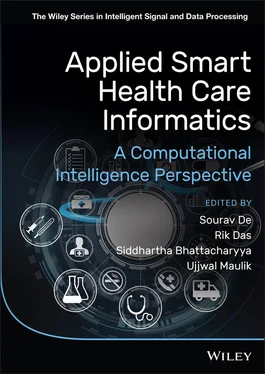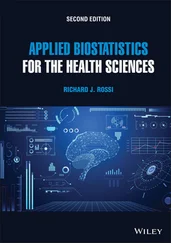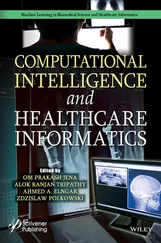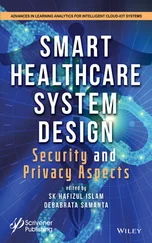1 An Overview of Applied Smart Health Care Informatics in the Context of Computational Intelligence
Sourav De1*, and Rik Das2
1 Department of Computer Science & Engineering, Cooch Behar Government Engineering College, Vill‐ Harinchawra, P.O.‐ Ghughumari, Cooch Behar, West Bengal, 736170, India
2 Department of Information Technology, Xavier Institute of Social Service, Post Box No‐7, Dr Camil Bulcke Path, Ranchi, Jharkhand, 834001, India
Health care informatics, in other words medical informatics, alludes to the use of data design and onboarding to the field of medical care, which basically covers the administration and utilization of patient medical services data. Through a multidisciplinary approach, it utilizes health information technology to improve medical care by depending on more advanced opportunities. According to the United States National Library of Medicine (NLM), health informatics is ”an interdisciplinary study of the design, development, adoption and application of IT‐based innovations in health care services delivery, management and planning” (DeBakey, 1991). Basically, it impacts the improvement of the obtaining, stockpiling, recovery, and utilization of data in health and bio‐medication. Intelligent health care informatics expand the domain of current medical care conveniences by encompassing aspects from intelligent technologies to computational engineering. Intelligent analysis of the information upgrades the general administration by taking everything into account.
Health care informatics combine the fields of information technology, science, and medicine for a better seamless and speedy management process that serves people worldwide. The main objective for health care informatics is to render effective health care to patients with the help of technologic advancements in public health, drug discovery, pharmacy, etc. However, there is an insufficient understanding of the computational methodologies that will be highly efficient for the health care sector and its approach for patients worldwide (Durcevic, 2020).
Belle et al. (2015) discussed various smart health care informatics that can be tackled using computational techniques. Big data analytics is required for the health care sector due to the rising costs in nations like the United States (Durcevic, 2020). Moreover, expenses are much higher than they ought to be, and they have been rising over the last 20 years. Distinctly, we are in need of smart, data‐driven improvements in the health care sector.
1.2 Big Data Analytics in Healthcare
Big data analytics can be applied in different areas of medicine. The concept of big data analytics can be employed in different areas and among them image processing, signal processing, and genomics (Ritter et al., 2011) are primarily noted.
Medical images are a vital source of data, and they are frequently employed for diagnosing, assessing therapy, and designing (Ritter et al., 2011) algorithms. X‐ray, magnetic resonance imaging (MRI), molecular imaging, computerized tomography (CT) images, photo acoustic imaging, ultrasound, fluoroscopy, and mammography are some instances of imaging methods that are found inside clinical settings (Belle et al., 2015). Medical images can run from a couple of megabytes to process a solitary report to many megabytes per analysis: for example, thin‐slice CT studies (Seibert, 2010). These types of information need huge capacity limits for long term data retention and require accurate and fast algorithms for decision‐assisting automation. Likewise, if other sources of information obtained for an individual patient are additionally applied at diagnoses, prognosis, and treatment, then the issue of proving reliable storage and increasingly advantageous methods for this large scope of records turns into a challenge.
Like health care images, medical signals likewise present quantity and speed snags, particularly during the persistent acquisition of high quality images and their storage from the many screens associated with every patient (Belle et al., 2015). Physiological signals not only create information dimension problems but also have baffling complexity of a spatiotemporal nature. Nowadays, numerous heterogeneous and uninterrupted monitoring devices are employed in the health care system to apply solitary physiological waveform information or crucial discrete data provided to systems if there should be an occurrence of plain occasion (Cvach, 2012; Drew et al., 2014).
The human genome is comprised of about thirty thousand genes. It has been observed that the price to sequence the human genome decreases with the advancement of high‐throughput sequencing technology (E.S. Lander and et al., 2001; Drmanac et al., 2010). Investigating genome‐scale information with suggestions for current public fitness insurance policies, the conveyance of care, and creating noteworthy proposals in an opportune way is a sizeable undertaking to the discipline of computational biology (Caulfield et al., 2013; Dewey et al., 2014). In a clinical setting, the delivery of these recommendations are very costly as time is very crucial.
In spite of huge expenditures by the current health care systems, clinical results become minimal (Oyelade et al., 2015). For big data analytics, it is a hazard to expect an extra quintessential section to help with investigation and revelation measures, bettering the conveyance of care, helping with the plan and design of medical care strategy, and make use of a way to exhaustively assess the muddled and tangled medical services information. More specifically, appropriation of the bits of information received from big data analytics can possibly save lives, enhance care conveyance, prolong admittance to clinical services, regulate installment to execution, and assist managing the improvement of clinical offering costs (Belle et al., 2015).
Artificial intelligence impacts the health care domain as AI is the development of computer systems able to perform tasks that requires human intellect. Tasks such as object detection, decision making, solving complex problems, and so on are a few main benefits of artificial intelligence. AI also gives us predictions with an increased level of accuracy, it helps in decision making processes, it has solved complex problems, and it quickly performs high‐level computations that take days for a human to solve. AI is something that makes human lives easier by performing high level computations and solving complex problems.
According to the PricewaterhouseCoopers (PwC) report, artificial intelligence will contribute an additional $ 15.7 trillion to the world economy by 2030, and the greatest impact will be in the health care sector (pwc). Healthcare is getting more import and using AI in more advanced manner. The sudden importance of AI in the health care industry can be categorized into two major points. First, the high availability of medical data; many of us have tons and tons of medical data in the form of our medical history and the availability of data makes implementing artificial intelligence much easier (Bush, 2018). Second, the introduction of complex algorithms. Machine learning alone is not capable of handling high dimensionality data and medical histories are extremely high dimensional in character, there are thousands of attributes that are hard for humans to analyze and process data through machine learning. However, when neural networks and deep learning were introduced, the process become much easier. Neural networks and deep learning are focused on solving complex problems that involve high dimensionality data; their development played a significant role in the impact of AI on health care (Simon et al., 2007; Loria).
Читать дальше












